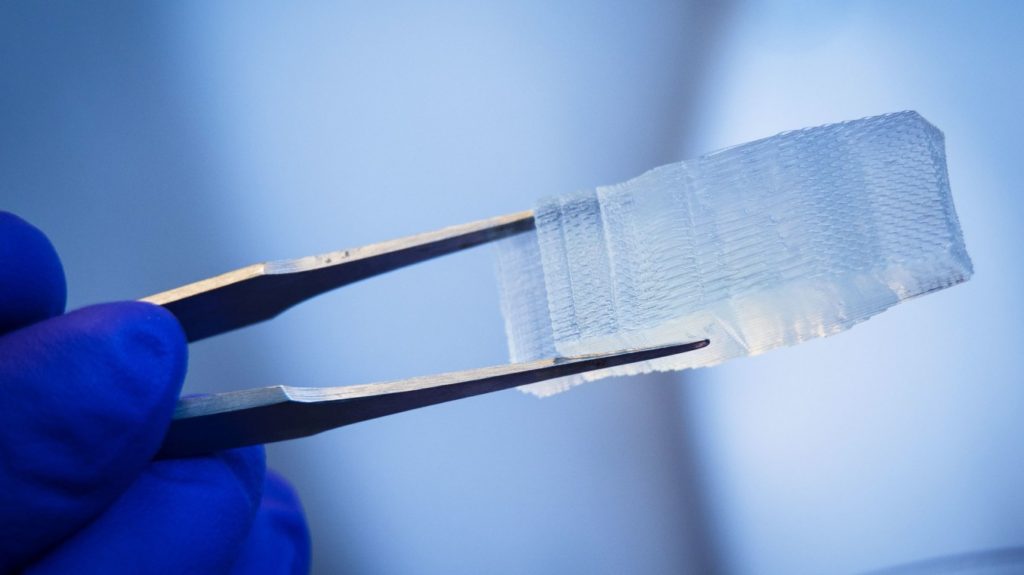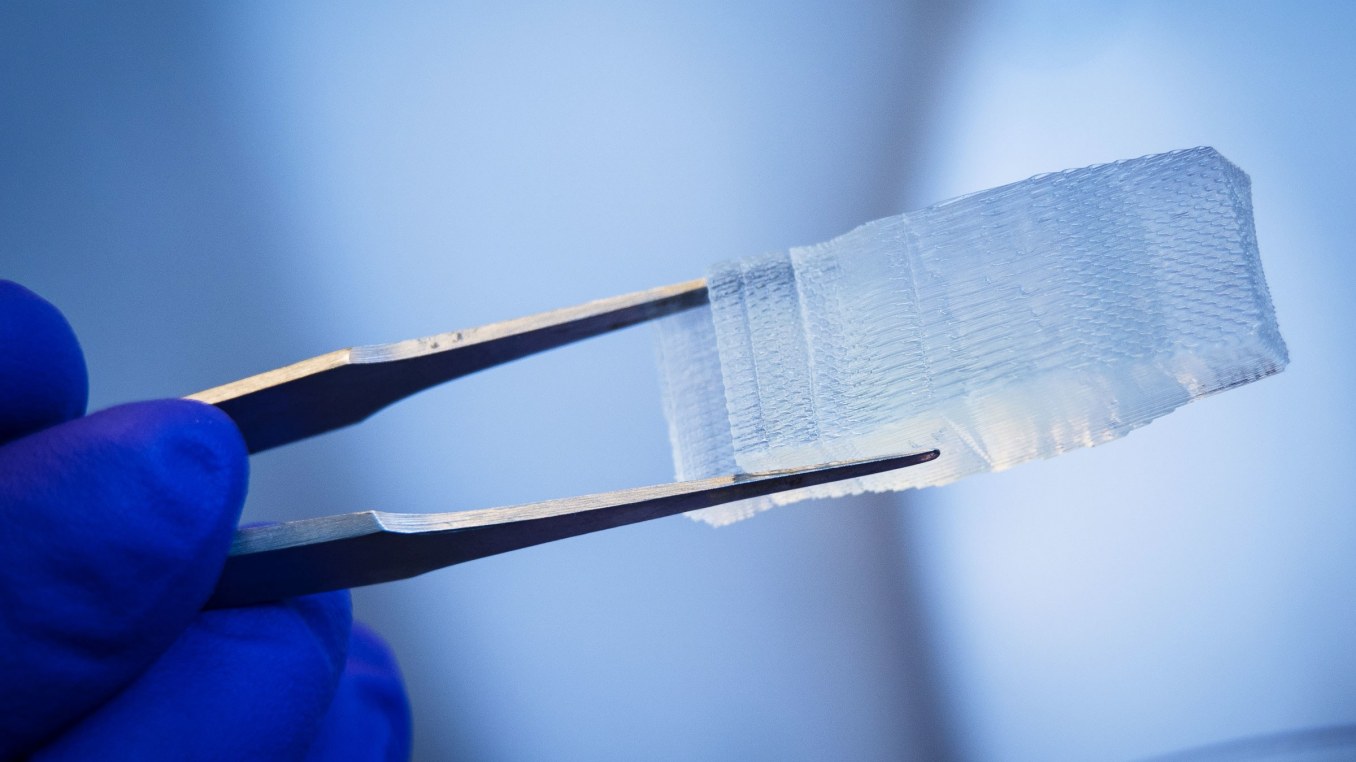
| Bio-Printers Are Churning Out Living Fixes To Broken Spines What it is: In a groundbreaking study, researchers from the University of California at San Diego successfully bioprinted spinal implants to regenerate spinal cords in injured mice. Essentially, the team printed a 3D biomimetic hydrogel scaffolding, customized to a given rodent with spinal cord damage. They filled this scaffolding with neural progenitor cells (basically spinal cord stem cells), which facilitate axon (spinal cord cell) regeneration. After implanting the scaffold-neural cell matrix into the mice, the researchers observed axon regrowth around the implant. Eventually, the mice regained partial movement of their hind legs. Why it’s important: Bioengineers are using 3D printers and regenerative medicine to completely transform how we rehabilitate, cure and repair the human body. Current applications include replacing bones, augmenting dentistry, custom-fitting prosthetics, replacing organs and repairing nerves. While most bioprinting research is carried out in vitro (in Petri dishes), this experiment was performed in living mice, explicitly showcasing this technology’s ability to transform quality of life. As Peter is discussing in his Longevity and Vitality blog series, various regenerative medicine technologies are converging to dramatically extend the healthy human lifespan. Bio-Printers Are Churning out Living Fixes to Broken Spines (Wired) For doctors and medical researchers repairing the human body, a 3D printer has become almost as valuable as an x-ray machine, microscope, or a sharp scalpel. Bioengineers are using 3D printers to make more durable hip and knee joints, prosthetic limbs and, recently, to produce living tissue attached to a scaffold of printed material. Researchers say that bio-printed tissue can be used to test the effects of drug treatments, for example, with an eventual goal of printing entire organs that can be grown and then transplanted into a patient. The latest step toward 3D-printed replacements of failed human parts comes from a team at UC San Diego. It has bio-printed a section of spinal cord that can be custom-fit into a patient’s injury. The scientists first printed out small implants made of softgel and filled them with neural stem cells, again using a printer. The implants were then surgically placed inside a tiny gap in a rat’s spinal cord. Over time the new nerve cells and axons grew and formed new connections across the cut spinal cord of the animal. These nerve cells connected not only with one another but with the host spinal cord tissue and the circulatory systems of the patient, which helps ensure their survival in the body. The precision 3D printing allowed the softgel and cellular matrix to fit accurately into the wound. The UCSD team, led by Shaochen Chen, a professor of nanoengineering, and neuroscientist Mark Tuszinski, published their findings today in the journal Nature Medicine. Most work on 3D bio-printing is done in culture dishes, but this experiment was unique in that the team was able to do this in laboratory rats, and because the lab-grown cells then successfully bridged the gap of a cut spinal cord and partially restored movement to the animal’s hind quarters. “They were able to reorient the cells that create scar tissue and create new connections,” says Christine Schmidt, a professor of biomedical engineering at the University of Florida who was not associated with this new research. “This has always been a huge challenge in the field. That is really novel.” Bio-printers use a computer-guided pipette to layer living cells, referred to as bio-ink, on top of one another to create artificial living tissue in a laboratory. Most bio-printers can only print down to 200 microns, but this group developed a method of producing tissue down to 1 micron, Chen says. This higher resolution meant they were able to more accurately reconstruct the mixture of gray and white matter that makes up the spinal cord. By Eric Niler | Wired |

 Tiger Buford – retained recruiter dissecting orthopedics
Tiger Buford – retained recruiter dissecting orthopedics 